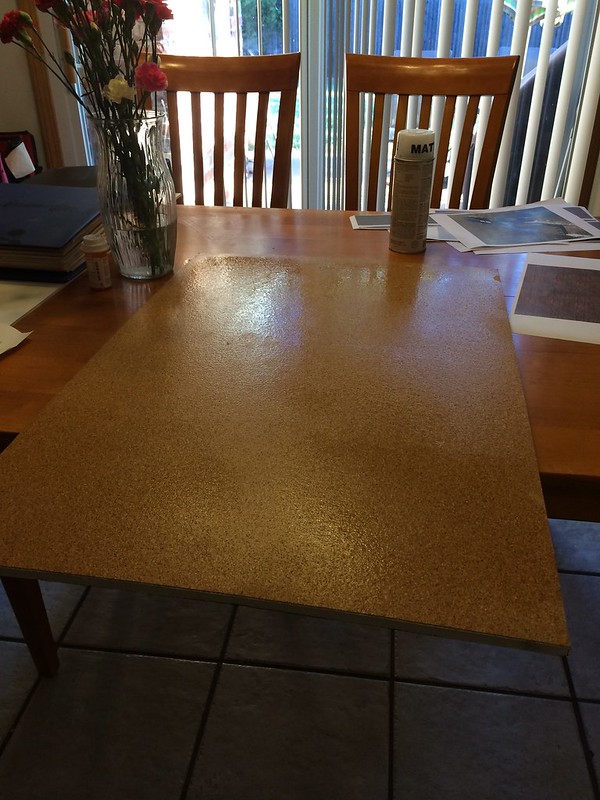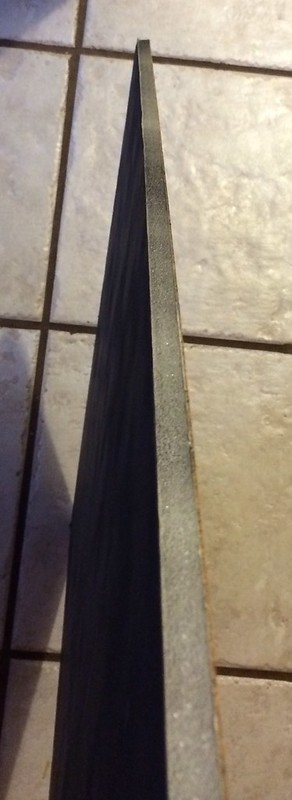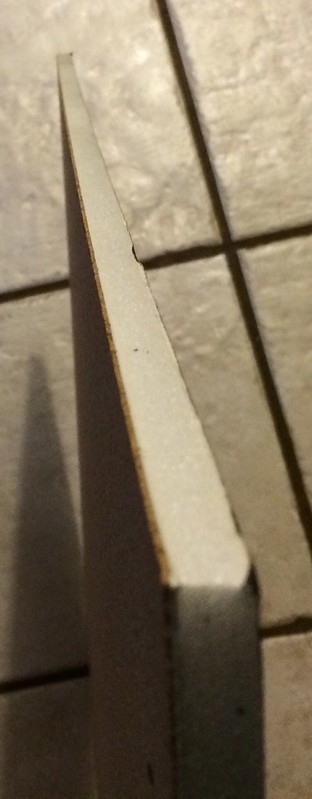I have great news all. I got to experiment with the cork foam core this morning and I have to report that it is very water safe on the cork side. I'm not sure what kind of glue they used but it held fast and actually acted as a water barrier. I feel very very good about this material now. I do think I will need to brace it more across the long side but this is a good first step.
Sloppy wet cork foam core:

After it dried:

Some slight warpage on one side but remember I never had this glued down to anything. It was just setting there bein' all wet and stuff.

Here is what i've learned about this technique.
- You MUST seal the paper side with paint. I highly recommend a cheap rattle can enamel. I want to brush paint some oil rustoleum but I haven't tried that yet. I do know the enamel rattle can worked great though.
- Do NOT use latex brush paint to seal the paper side. I learned this the hard way ... it curled BADLY. I think it's just too much water for the paper to absorb.
- I believe you could use a clear Krylon to seal the paper side if you want to keep it white.
- The cork side seems to be sealed on the cork side and safe from water.
That's a fairly short list so far so I hope you guys give this a try and see how it works for you.
Next step is to build a new section.